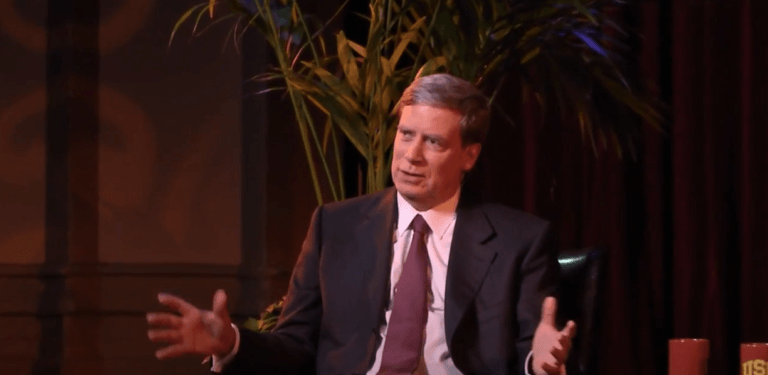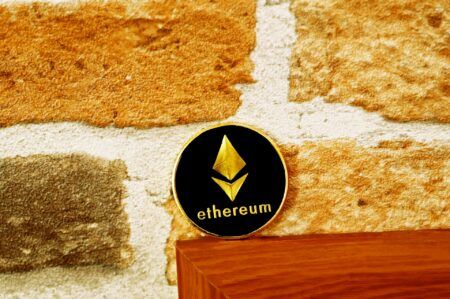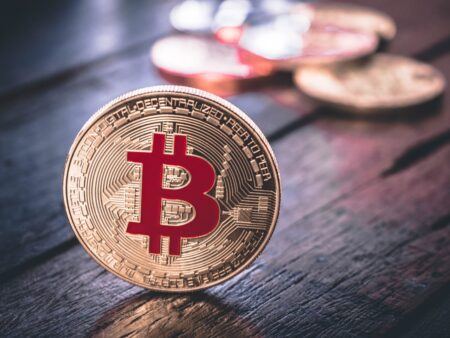On Thursday (June 9), American billionaire investor Stanley Freeman Druckenmiller shared his latest thoughts on crypto.
Druckenmiller started his career as an equities analyst at Pittsburgh National Bank. Then in 1981, he founded investment firm Duquesne Capital Management, which had a positive return every year until he decided in August 2010 to quit the hedge fund business and close his firm.
According to a report published by the New York Times (NYT) on 18 August 2010, Druckenmiller wrote the following in a letter to investors to explain why he wanted to stop being a hedge fund manager:
“I have had to recognize that competing in the markets over such a long time frame imposes heavy personal costs,” he wrote. “While the joy of winning for clients is immense, for me the disappointment of each interim drawdown over the years has taken a cumulative toll that I cannot continue to sustain.”
Between 1988 and 2000, Druckenmiller was the lead portfolio manager for Quantum Fund, which was started by George Soros and Jim Rogers in 1973. In 1992, this hedge fund made a successful $10 billion bet against the British Pound (GBP).
According to the NYT report, Soros and Druckenmiller pioneered a new style of hedge fund trading:
“With Mr. Soros, Mr. Druckenmiller helped pioneer an investment strategy that today is referred to as macro trading. They married two different strands of investing. On one hand, the two fund managers placed large bets on global currencies and commodities by watching charts and focusing on political trends. But they also engaged in old-fashioned stock picking, researching companies through fundamental security analysis.”
According to Forbes, the 68-year-old former hedge fund manager, who personal fortunate is estimated to be worth around $6.8 billion (as of 11 June 2021), is now managing his money through a family office (Duquesne Family Office LLC).
Druckenmiller’s latest comments about crypto while he was being interviewed on June 9 by John Collison, Co-Founder and President of Stripe, at the (virtual) 2022 Sohn Investment Conference.
Below are a few highlights from comments Druckenmiller made about crypto during this interview.
On Potential Effect of Crypto on Other Asset Classes
“I don’t know whether I’m seeing it, but I expect it to. You can’t take over $2 trillion in purchasing power and then take a trillion of it out and not matter. John, I also have high frequency signals, and there certainly seems to be a strong correlation between crypto and the Nasdaq.
“I don’t think it takes a genius to figure out why. So, I’m looking at it as an indicator that way. Crypto, you know, everything that Charlie Munger says about it, I’m sympathetic to, everything that Bill Miller says about it, I’m sympathetic to.
“I think that’s a movie that has yet to be played out and one that I don’t want to bet on with conviction, but I will be very surprised if blockchain isn’t a real force in our economy, say 5-10 years from now and not a major disruptor with companies that will have been founded between now and then. It’ll do very well, but it will also challenge things like our financial companies and do a lot of disruption.
“I find crypto interesting. My 69th birthday is in a couple weeks. I’m probably too old to compete… with the young people in this space, but I’m certainly monitoring it.“
Bitcoin vs Gold
“Nasdaq type risk play takers are the ones that stand to play in Bitcoin and curmudgeons that are gold bugs [are] playing gold… If you believe we’re going to have irresponsible monetary policy and inflation going forward, if it’s in a bull phase, you want to own Bitcoin, but if it’s in a bear phase for other assets, you want to own gold.“
On 26 May 2021, The Hustle published an interview with Druckenmiller, in which he commented on Bitcoin, Ethereum, and Dogecoin.
On Bitcoin ($BTC)
- He used to think that “crypto and Bitcoin are a solution in search of a problem”.
- As Bitcoin went “from like $50 to $17,000”, he refused to buy, hated the fact that he didn’t own Bitcoin as the price kept going up, and basically “felt like a moron”.
- Then, last year, near the start of the COVID-19 pandemic, when the Fed and other major central banks started going “nuts” with their money printing, he realized this was the problem that Bitcoin was designed to deal with.
- Another thing that had a major influence on him was legendary billionaire macro investor Paul Tudor Jones, informing him that “when Bitcoin went from $17,000 to $3000”, 86% of those that owned it at $17,000 “never sold it”. This got Druckenmiller to look at Bitcoin as “something with a finite supply” where “86% of the owners are religious zealots”.
- Then, finally, around the middle of last spring, Druckenmiller FOMOed into Bitcoin, but he found buying Bitcoin in the kind of quantity that made sense to him (around $100 million worth) much more difficult than doing a similar thing with gold, and so “like an idiot” he “stopped buying it”, and the next thing he knew, the Bitcoin price had reached $36,000.
- Since his “heart’s never been in it”, he sold some of his Bitcoin holdings in order to recover his costs, and kept the remaining amount.
- Recently, he discovered that Palantir Technologies (NYSE: PLTR), which the Duquesne Family Office is a major shareholder of, “has announced that its going to start accepting Bitcoin” and that in fact this kind of adoption of Bitcoin is “happening all over the place”.
- As for the future, he thinks that “as long as Jay Powell keeps acting like he’s been acting” gold and Bitcoin are “going to have the wind behind them”.
On Ethereum ($ETH)
- Druckenmiller believes that Bitcoin has “has won the store of value game” against Ethereum because it is “a brand”, “it’s been around for 13-14 years”, and “it has a finite supply”.
- Although he accepts that Ethereum is leading smart contracts platform, he is not sure how long it will be be able to maintain this position, and says that Ethereum reminds him of “Yahoo before Google came along”.
On Dogecoin ($DOGE)
- Druckenmiller likens retail investor interest in Dogecoin to the NFT craze and says that in both cases this is “a manifestation of the craziest monetary policy in history”. He can’t see the point of Dogecoin since (unlike with Bitcoin) “there’s no limit on supply”.
- However, he is too afraid to short DOGE because he doesn’t like to get burned. So, he just tries to “pretend Doge doesn’t exist”. And he has no FOMO whenever he sees DOGE going up; he just laughs.









